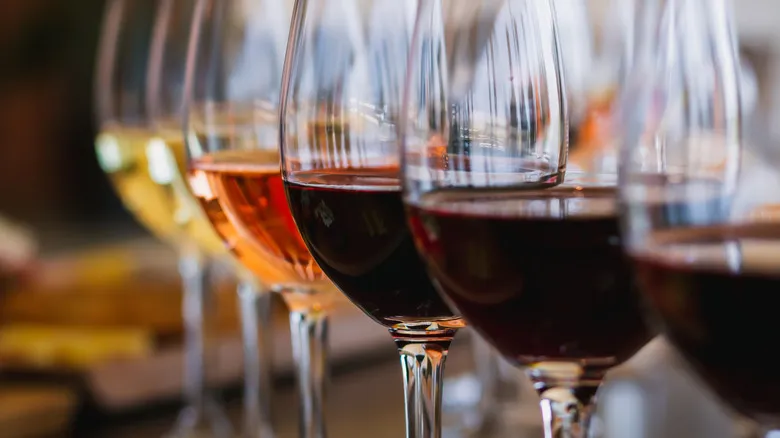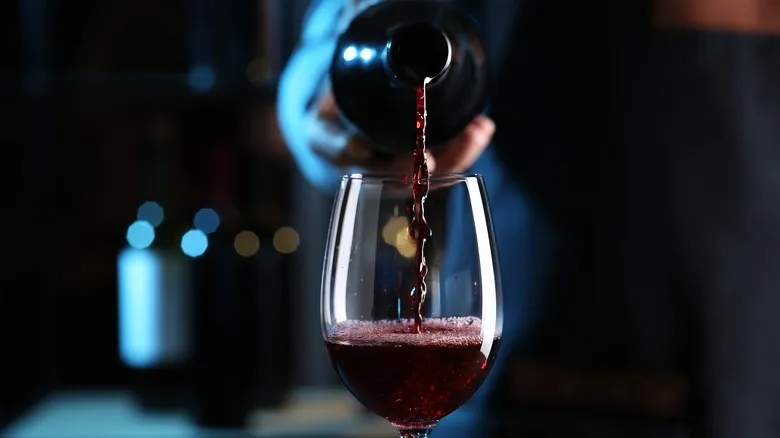A vague location can mean a subpar wine

The designation on a wine label indicates the origin of the grapes, rather than the specific site of production. It can refer to a particular vineyard or encompass a larger area, such as a state or region. In a Bon Appétit video, sommelier André Hueston Mack points out that the more general the location on a wine label, the less likely it is to indicate a high-quality wine. This is because a broad label like "France" or "California" suggests that the wine may be crafted from a blend of grapes sourced from various regions, rather than from a single, specific location.
Since the flavor of wine is influenced by the terroir where the grapes are cultivated, a wine with a vague location label may contain grapes that taste quite different from one another. However, this doesn't necessarily imply poor quality; a wine associated with a broader region can still be enjoyable. While it undergoes tasting evaluations during production, a blend of grapes from diverse sources may result in a less harmonious profile compared to a single varietal from a specific vineyard. For instance, a bottle of Pinot Grigio labeled simply "Italy" might lack the cohesiveness of one that specifies a particular vineyard. This is also a reason why wines with ambiguous location labels tend to be more affordable.
Other labels to look out for

In the video, André Hueston Mack recommends looking for the producer's name on the label. Wine producers play a key role in distributing their products to retailers both locally and globally. For those who enjoy exploring new wines, it's beneficial to take note of the producers behind the bottles you like. If you discover a producer whose style resonates with you, keep an eye out for new releases from other brands they collaborate with. Additionally, pay attention to import labels, as you might find that you have a preference for wines from specific countries.
As you browse, you might come across bottles labeled as vegan. Some wines are produced using animal-derived ingredients, such as egg whites and gelatin, which certain winemakers utilize during the winemaking process. Wines marked as "vegan" or "vegetarian" indicate that no animal products were used in their production. Wine labels provide insight into the characteristics of a wine, and learning to interpret them can lead you to your next favorite selection. Feel free to experiment with any wine that catches your eye, but be cautious of bottles with vague origins, as they may not meet your expectations.
Recommended

Don't Settle For Flat Sparkling Water — Just Use A Little Science

Can You Make Frozen Drinks With A Food Processor?

Why Champagne Bottles Are So Heavy

The One Mistake To Avoid When Pairing Wine With Spicy Food
Next up

